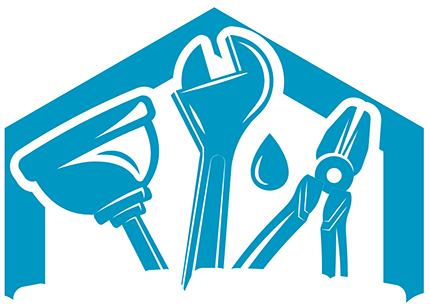Introduction: What is SEO for Plumbers?
Search engine optimization (SEO) helps plumbing businesses reach potential customers online. SEO for plumbers means adopting methods that raise your website's ranking in search results. Plumbers compete in a local market, and effective SEO can be a game changer.
For many plumbing businesses, SEO may seem like a mystery. However, breaking it down into steps makes it manageable. First, consider what your customers search for when they need plumbing services. This process begins with identifying the right keywords, such as local SEO for plumbers and plumbing seo keywords. These keywords help shape your content and connect with the right audience.
Next, understand that SEO involves both technical elements and content strategy. Technical SEO ensures your website loads fast and functions properly on mobile devices. A well-structured site supports search engine crawlers, making your site easier to index. Content, on the other hand, informs, engages, and converts your audience. By merging quality content with technical best practices, you set a strong foundation.
The approach to SEO for plumbers should include a mix of local SEO techniques and broader strategies. Local SEO is critical because most plumbing services cater to specific geographic areas. Plumbers can leverage location-based keywords to appear in search results when someone needs help nearby. This ensures that your service reaches people who are actively seeking local help.
Run Your Free SEO Audit NowUnderstanding SEO for Plumbers
Plumbing businesses face unique challenges and opportunities in the digital world. Understanding SEO for plumbers means focusing on strategies tailored to local service providers. Consider these key elements:
- Local Relevance: Use localized keywords such as "local affordable plumbing services". Optimize for local search results when potential clients search for nearby services.
- Technical Foundations: Ensure fast load times, mobile-friendliness, and proper navigation. Maintain a clear site structure that helps search engines index your pages.
- Content Quality: Provide accurate, helpful, and engaging information. Address common plumbing issues and solutions to connect with readers.
- Building Trust: Display customer reviews and testimonials. Use case studies and expert advice to establish authority.
This balanced approach not only increases your chances of ranking higher but also builds a trustworthy business or brand.
Keyword Research and Plumbing SEO Keywords
Effective keyword research is the cornerstone of SEO for plumbers. Plumbers must select keywords that reflect both their services and the language potential clients use. Below is a structured approach to keyword research:
Step-by-Step Keyword Research Process
- Identify Core Keywords:
- Primary Keyword: SEO for Plumbers.
- Secondary Keywords:
- local plumbers
- best plumbers in [city]
- afordable plumber services
- cheap plumbing services
- plumbing experts
- Research and Analyze:
- Use SEO tools to measure search volume and competition.
- Identify long-tail keywords to attract a more specific audience.
- Integrate Keywords Naturally:
- Use keywords in titles, headings, and meta descriptions.
- Ensure content flows naturally for readers.
- Monitor and Update:
- Regularly review keyword performance.
- Adjust strategies based on trends and performance metrics.
Keyword Integration Table
| Content Area | Keyword Example | Purpose |
|---|---|---|
| Homepage Title | SEO for Plumbers | Main focus to attract broad traffic. |
| Service Description | local SEO for plumbers | Target local customers searching nearby. |
| Blog Content | best seo for plumbers | Engage readers with quality insights. |
| Service Page | seo services for plumbers | Highlight specialized services. |
| Support Content | plumbing seo keywords | Provide in-depth, niche keyword strategies. |
| Expert Advice Section | plumber seo experts | Build trust through expert insights. |
A thoughtful keyword strategy transforms your website into a dynamic resource for potential customers. This structured plan forms the backbone of successful SEO for plumbers.
Local SEO Strategies for Plumbers
Local SEO is crucial for plumbing businesses that serve specific geographic areas. When potential clients search for local services, search engines display results that are relevant to their location. Here are some effective strategies:
Key Local SEO Tactics
- Google My Business (GMB):
- Claim and complete your GMB profile.
- Include accurate contact details, business hours, and service descriptions.
- Customer Reviews:
- Encourage satisfied customers to leave reviews on Google and Yelp.
- Display testimonials on your website to build credibility.
- Localized Content:
- Write blog posts about local plumbing challenges.
- Highlight community involvement or local projects.
- Location-Specific Keywords:
- Incorporate local keywords such as the name of your city or neighborhood.
- Use phrases like local SEO for plumbers to emphasize geographical relevance.
| Benefit | How It Helps |
|---|---|
| Increased Visibility | Appear in local search results and maps. |
| Higher Trust Levels | Build credibility through verified reviews and testimonials. |
| Better Targeting | Reach customers specifically looking for local services. |
| Enhanced Engagement | Connect with the community through localized content. |
Check out our free SEO Guides to help grow your business.
Download On-Page SEO Guide Download Content Optimization and Keyword Research Guide Download Off-Page SEO GuideBy combining these local SEO strategies, plumbing businesses can improve their visibility and connect with potential customers in their area.
Content Creation and Optimization for Plumbing Businesses
Content remains a powerful tool for attracting and engaging potential customers. For plumbing businesses, creating content that informs and guides readers is an essential part of SEO for plumbers. Below are methods to create and optimize content effectively.
Content Creation Guidelines
- Planning:
- Identify topics that address common plumbing issues.
- Create a content calendar that aligns with seasonal trends.
- Writing Style:
- Use a simple Subject-Verb-Object sentence structure.
- Break large paragraphs into bullet lists for readability.
- Content Optimization:
- Integrate keywords naturally in titles, headers, and body text.
- Use internal links to connect related topics, such as linking to Plumber SEO Experts.
Example Content Outline
- Introduction: Overview of common plumbing issues.
- Problem Identification: List and describe typical plumbing problems.
- Solutions: Detailed, step-by-step repair guides.
- Maintenance Tips: Advice on preventing future issues.
- Customer Testimonials: Real-life success stories.
Tips for Enhancing Readability
- Use Bullet Points:
- List steps or features clearly.
- Short Paragraphs:
- Keep paragraphs concise and focused.
- Visual Elements:
- Add images, diagrams, or tables to illustrate points.
By following these content creation and optimization strategies, you build a site that is both informative and engaging for potential customers.
On-Page and Off-Page SEO Techniques for Plumbers
A comprehensive SEO strategy for plumbers combines on-page and off-page techniques. Both elements improve your site's visibility and user engagement.
On-Page SEO Techniques
- Meta Elements: Title tags and meta descriptions using primary and secondary keywords.
- Headers and Subheadings: Use keywords in H1, H2, and H3 tags.
- Internal Linking: Incorporate links to pages within your content that make sense. Think of it as creating a web of connections between each of your webpages. Be thoughtful about it.
- Content Structure: Use bullet points, numbered lists, and tables to break up text. Incorporate pictures but don't over-do it with too many graphics.
Off-Page SEO Techniques
- Backlink Building: Acquire links from local directories and industry-specific websites.
- Social Media Engagement: Maintain active profiles to build community trust.
- Guest Blogging: Write articles for reputable sites with backlinks to your site.
Comparison Table: On-Page vs. Off-Page SEO
| SEO Aspect | On-Page Techniques | Off-Page Techniques |
|---|---|---|
| Content | Optimized meta tags, clear headings, and internal links | Guest posts, social media mentions, and reviews |
| Structure | Organized site architecture and readable layout | Building relationships for natural backlinking |
| Engagement | Quality content with visual aids and lists | Active community engagement and credible external links |
Leveraging SEO Tools and RibbitRank for SEO Feedback
Effective SEO for plumbers requires constant monitoring and adaptation. Leveraging SEO tools helps you track performance and refine strategies. Below are practical ways to use these tools.
Benefits of Using SEO Tools
- Performance Monitoring: Track page load speed, keyword rankings, and user engagement.
- Content Analysis: Get feedback on readability, keyword density, and overall structure.
- Technical Audits: Identify and fix issues like broken links and slow-loading images.
- Backlink Analysis: Understand your backlink profile and its impact on SEO.
Steps to Leverage RibbitRank Tools
- Audit Your Website: Use RibbitRank’s Analyze for a full site review.
- Monitor Keyword Rankings: Track how well SEO for Plumbers and related keywords are performing.
- Implement Recommendations: Address any technical or content-related issues based on tool feedback.
- Regular Reviews: Schedule periodic audits to ensure your site remains optimized.
Example of a Tool Dashboard Snapshot
| Metric | Current Value | Target Value | Action Needed |
|---|---|---|---|
| Page Load Speed | 4 seconds | Under 3 seconds | Optimize images and caching. |
| Keyword Ranking | 15th position | Top 5 | Refine content and meta tags. |
| Mobile Usability | 80% score | 95% score | Improve responsive design elements. |
Measuring Success and Future Steps
Tracking your progress is key to ensuring that your SEO efforts deliver results. In the realm of SEO for plumbers, measuring success involves monitoring various metrics, adjusting strategies, and planning for future growth.
Key Performance Indicators (KPIs)
- Organic Traffic: Number of visitors coming from search engines.
- Keyword Rankings: Position of primary and secondary keywords.
- Bounce Rate: Percentage of visitors leaving quickly.
- Conversion Rates: Number of inquiries or service calls received.
Steps to Measure and Improve SEO Performance
- Set Clear Goals: Define what success looks like for your website.
- Use Analytics Tools: Leverage Google Analytics and RibbitRank’s Analyze to monitor traffic and engagement.
- Regular Audits: Review content, keywords, and site performance periodically.
- Adjust Strategies: Update content and optimize underperforming pages based on performance data.
Future Steps
| Focus Area | Action | Expected Outcome |
|---|---|---|
| Content Updates | Regularly refresh blog posts and service pages | Improved engagement and search rankings |
| Technical SEO | Address site speed and mobile usability issues | Better user experience and lower bounce rates |
| Keyword Strategy | Update keywords based on current trends and analytics data | Higher targeted traffic and conversion rates |
| Local Outreach | Build more local backlinks and enhance local listings | Stronger local presence and community trust |
 RibbitRank
RibbitRank


